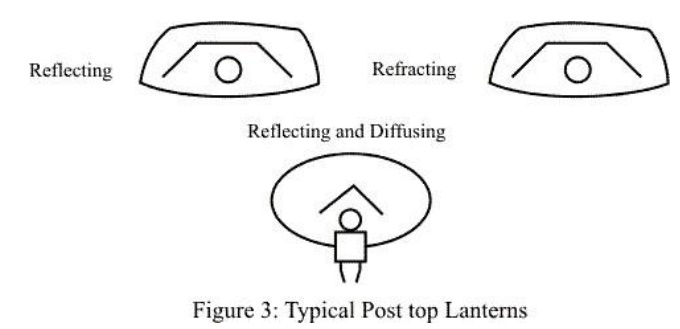Chapter: Electric Energy Generation and Utilisation and Conservation : Illumination
Road Lighting
Road Lighting:
Conventionally by they are arranged in a column, mounted on a wall or suspended by a span wire. Plane of Symmetry being in vertical plane perpendicular to the axis of the road along the road. Catenary – suspended from a catenary cable parallel to the axis of road. Plane of symmetry parallel to the axis of road. They employ Corrosion Resistant sturdy materials and are usually closed.

Road lighting provides visual conditions for safe, quick and comfortable movement of Road users.
The factors responsible for the lighting scheme for roads are:
i. Luminance Level.
ii. Luminance Uniformity.
iii. Degree of Glare limitation.
iv. Lamp Spectra and
v. Effectiveness of visual guidance.
Luminance Level:
As the Luminance of a road influences contrast sensitivity of drivers’ eyes and contrast of obstacles, relative to back ground. Hence affects performance of Road users. Surrounding brightness affects the adaptation of human eye. Bright surroundings lower contrast sensitivity there by requiring higher luminance for the road surface. Darker surroundings make driver adapted to road (assuming road is brighter). Roads with dark surrounds are to be lit by including surroundings. Otherwise drivers cannot perceive objects in the surroundings. CIE 12 recommends that 5m away from the road on either side should be lit by illuminance level at least 50% of that on the road.
Luminance Uniformity:
Adequate uniformity is necessary for visual performance and visual comfort of the user. From visual performance view point, uniformity ratio is defined by U0 = Lmin / Lavg .U0 should not be below 0.4.From visual comfort view point uniformity ratio is defined as U1 = Lmin / Lmax measured along the line passing through the observer positioned in the middle of the traffic facing the traffic flow. Termed longitudinal uniformity ratio.
Glare Limitation:
Physiological or disability glare affect visual performance. Psychological or discomfort glare affect visual comfort. Glare is to be avoided at all costs.
Lamp Spectra
Spectral composition determines color appearance of the lamp. The way lamp is going to render color to objects Low pressure sodium vapour lamps give greater visual acuity. Spectrum should be such; there is Great speed of perception, less discomfort glare and shorter recovery time after glare.
Visual Guidance:
Visual guidance guides the road user and hence must for user to get a recognizable picture of the course immediately. This is improved by lamp arrangement that follows the run of the road. More so if turns and intersections are there. Lighting scheme must provide visual guidance. On roads having separate lanes with a separator the lighting columns are located on the separator. As is the custom in large avenues in Metros. On a curve the lighting column is located along the outer column. This gives a clear indication of the run of the road on the curvature. Visual guidance pilots traffic through lights of different colors on different routes.
Related Topics